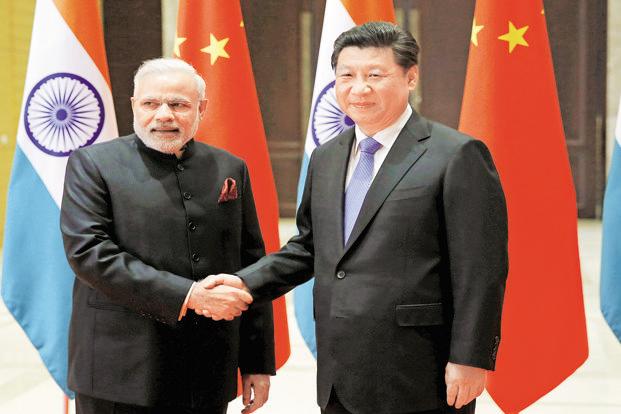15
May
One year of National Democratic Alliance: change or continuity in foreign policy?
Comments Off on One year of National Democratic Alliance: change or continuity in foreign policy?
Among the many aspects of Narendra Modi’s leadership that were being propagated during the election campaign last year, his acumen for foreign policy and international affairs was definitely not one. It has been almost a year since the National Democratic Alliance (NDA) formed the government under Modi’s leadership—a good time to examine its foreign policy. The expectations about Modi himself steering the foreign policy might have been minimum, but the expectations from the NDA government were, indeed, great; particularly against the backdrop of the dismal performance of the United Progressive Alliance (UPA)-II government, even in the foreign policy arena.
It may be an appropriate initial remark that the NDA has restored some sense of purpose and direction to India’s foreign policy, which was conspicuous by absence during the previous five years. The recent trip to three Indian Ocean island countries—Seychelles, Mauritius and Sri Lanka—by Prime Minister Modi is an indication of this. The itinerary underlines the importance of Indian Ocean region for the security of India’s sea lanes of communication, especially amidst growing Chinese presence in the region. For some time now, India has looked to reinforce a necklace of diamonds outside the perceived string of pearls of China. However, for the first time the Indian establishment used a term such as Sagar Mala. In another notable development, India recently concluded a deal with Iran for the development of Chabahar port. This will provide India crucial access to Afghanistan as well as Central Asia. The idea came up during the previous NDA government but was put on the backburner because of US pressure—the US resented close India-Iran ties over the issue of Iran’s nuclear capability. As the nuclear talks with Iran have progressed, India has taken the opportunity to conclude this long-pending deal.
Three important agreements deserve mention as examples of New Delhi’s successful bilateral diplomacy during the previous year. First, Japan agreeing to invest more in India’s development and infrastructure. The other two were agreements with Australia and Canada respectively, for supply of uranium for India’s nuclear power plants. Considering there was stiff resistance from both countries earlier with respect to supplying uranium to India, this is indeed a significant development. It has to be noted, however, that negotiations for all these three began under the UPA regime. Among the two most important bilateral relationships for current Indian foreign policy, the NDA has brought about an expected change in the previous government’s policy on the US. There is a renewed sense of cordiality and broad convergence of interests, without being apologetic about it. The policy on China, however, reflects more continuity. The only change is the effort to invite Chinese investment to boost Make in India.
In case of multilateral fora, whether it is acceptance of Shanghai as the headquarters of the proposed Brics Development Bank in exchange for the first presidency of the bank; or negotiations in the World Trade Organization (WTO), particularly over the issue of food subsidy; the Modi government has not made any significant departure from the previous government’s policies.
Modi’s personal contribution to Indian foreign policy is manifest in the emphasis he places on the Indian diaspora. He has attempted to link the diaspora to the Make in India campaign. This is understandable given the track record of Modi as chief minister in inviting investment from abroad to Gujarat. The previous NDA government under Atal Bihari Vajpayee had made similar overtures. The success of the Make in India campaign abroad, however, hinges on NDA’s ability to bring the goods and services tax (GST), amending the land acquisition Law and introducing labour reforms. In addition, it must be said that New Delhi’s ability to use the diaspora as soft influence gets severely limited because while it looks upon the Indian diaspora in North American and European countries, it tends to ignore the same in countries such as Malaysia, Singapore or South Africa. Modi’s invitation to heads of states and governments of Saarc (South Asian Association for Regional Cooperation) countries to attend his swearing-in ceremony was a masterstroke of symbolism. Yet, beyond the recent constitutional amendment for the land border agreement with Bangladesh and the renewed cordiality in India-Sri Lanka relations due mainly to its new pro-India government, South Asian relationships have not changed much.
The above analysis leads to a perception that the bureaucracy, not the political executive, is currently in the driving seat of India’s foreign policymaking process. Two major issues about Indian foreign policy need attention, sooner rather than later. One,is India’s self-perception about its role in world affairs. It aspires to be a major power, but continues to cling to its Third Worldism; it would like to influence events but shies away from proactive policymaking. Second, is India’s perception of the impact of China’s role in world affairs and its response. India has legitimate concerns about growing Chinese ambitions and presence in the Asia-Pacific and Indian Ocean region. Yet, it has kept a cautious distance from any likely anti-China grouping led by US and/or Japan. In order to avoid bandwagoning with the US and to meet the challenge of a rising China, India will have to assert itself and lead rather than being led. This will require some bold decisions and the political executive will have to take control of the steering wheel. Being the first government in three decades with a single party majority, the government has the wherewithal for the same. Whether it has the willingness, will be seen in the coming years.
Source: http://www.livemint.com/Opinion/dzba0SyFseh4Vd7XNGh11K/One-year-of-NDA-change-or-continuity-in-foreign-policy.html
